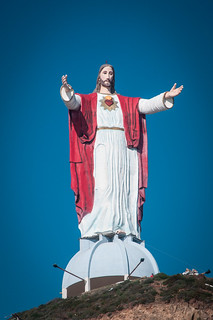The Roman Catholic Church Declines in Europe
While the population of Catholics is declining in Europe, the Church faces other, more fundamental changes
By Dillon Li, Staff Write

Photo courtesy of Shelbi Noble
“Vast demographic shifts in the Catholic population are reconfiguring the face of the church and shifting the institution’s center from its historic European heartland,” reports the Catholic News Service.
Europe, the place that Pope Francis I now calls home, once held two-thirds of the world’s Catholics in 1910. Today a pew research report estimates that number to be down to 24 per cent. Latin America’s Catholic population, on the other hand, has risen from 24 to 39 per cent of the world total in the last century.
Over the past 100 years, Catholics have held a remarkably stable population around the world – 17 per cent in 1910 and 16 per cent in 2010. However, it is the geographic distribution of the world’s Catholics that has changed substantially. Latin America, including the Caribbean, now has more Catholics than any other region in the world.
The circumstances behind this global shift have not gone unnoticed. When former-pope Emeritus Benedict XVI was elected in 2005, he swore to combat the secularization that was running rampant throughout Europe. His speeches, before massive crowds, criticized European leaders for encroaching upon religious freedoms, and encouraged Catholics to defend their faith publicly. In 2010 he announced the creation of a brand new pontifical council dedicated to the rejuvenation of the Catholic faith in traditionally Catholic regions.
“I have decided to create a new organism, in the form of a pontifical council, with the principal task of promoting a renewed evangelization in the countries where the first proclamation of faith has already resounded and where there are churches of ancient foundation present, but which are living through a progressive secularization of society and a kind of ‘eclipse of the sense of God,” he said.
Confidence in the Church has been tested under the high-profile sex abuse scandals and attempted cover––ups that have surfaced in recent years. In places like France, which separates religion from public discourse, laws have been put into place banning religious symbols, such as crucifixes and Muslim headscarves, from schools and other public spaces.
A Pew Research report on religious observance in Europe found low but relatively stable levels of religious commitment before and throughout Benedict’s pontificate Countries like Germany, France, Italy, and Spain hold the largest nominally Christian population in Europe, but few actually practise. Across the four countries, a minority of Catholics say that religion is a very important aspect in their life. Polls conducted in France, Italy, and Spain show little change during Benedict’s papacy in these small numbers of devout Catholics. In 2006, a year after Benedict`s election, religious importance surged to 52 per cent amongst Catholics in Germany. However, the number fell back to 36 per cent one year later, and no more than 42 per cent of German Catholics have rated religion as very important in five subsequent polls.
With the church losing its “former stronghold” of Europe and seeing a future in not only Latin America, but other developing continents like Africa and Asia, pressure was already building for the College of Cardinals to elect a pope that represented change.
Already within the month of Pope Francis’ papacy, he has stirred up controversy by “undoing” the reforms instituted by Pope Benedict, reforms which called Catholics back to a more traditional approach. Most notably, Pope Francis’ washing of two women’s feet in a ritual meant exclusively for men could be a sign for more reforms to come in the future.































Share the post "The Roman Catholic Church Declines in Europe"